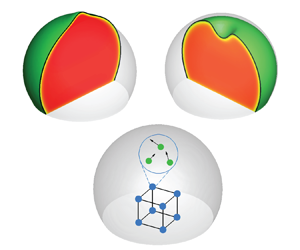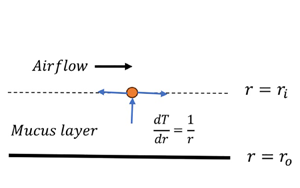Refine listing
Actions for selected content:
1417961 results in Open Access
A new lattice Boltzmann model for liquid–solid phase transition and its application in the simulation of sessile droplet solidification – focusing on volume change
-
- Journal:
- Journal of Fluid Mechanics / Volume 978 / 10 January 2024
- Published online by Cambridge University Press:
- 03 January 2024, A10
-
- Article
- Export citation
Effect of inhaled air temperature on mucus dynamics in the proximal airways
-
- Journal:
- Journal of Fluid Mechanics / Volume 978 / 10 January 2024
- Published online by Cambridge University Press:
- 03 January 2024, A15
-
- Article
- Export citation
Severe decline in abundance of Cyathostoma lari, a parasite of the nasal and orbital sinuses of gulls, at their central European nesting grounds
-
- Journal:
- Journal of Helminthology / Volume 98 / 2024
- Published online by Cambridge University Press:
- 03 January 2024, e1
-
- Article
-
- You have access
- Open access
- HTML
- Export citation
FLM volume 977 Cover and Front matter
-
- Journal:
- Journal of Fluid Mechanics / Volume 977 / 25 December 2023
- Published online by Cambridge University Press:
- 03 January 2024, p. f1
-
- Article
-
- You have access
- Export citation
Lawyers as Lobbyists: Regulatory Advocacy in American Finance
-
- Journal:
- Perspectives on Politics / Volume 22 / Issue 4 / December 2024
- Published online by Cambridge University Press:
- 03 January 2024, pp. 1045-1064
- Print publication:
- December 2024
-
- Article
-
- You have access
- Open access
- HTML
- Export citation
Soft institutions in Arctic governance—who does what?
-
- Journal:
- Polar Record / Volume 60 / 2024
- Published online by Cambridge University Press:
- 03 January 2024, e1
-
- Article
-
- You have access
- Open access
- HTML
- Export citation
Species discrimination in the multituberculate Mesodma Jepsen, 1940 (Mammalia, Allotheria): considerations of size, shape, and form
-
- Journal:
- Journal of Paleontology / Volume 97 / Issue 6 / November 2023
- Published online by Cambridge University Press:
- 03 January 2024, pp. 1282-1292
-
- Article
-
- You have access
- Open access
- HTML
- Export citation
Glacier fluctuation chronology since the latest Pleistocene at Mount Rainier, Washington, USA
-
- Journal:
- Quaternary Research / Volume 119 / May 2024
- Published online by Cambridge University Press:
- 03 January 2024, pp. 65-85
-
- Article
- Export citation
PARTITION OF LARGE SUBSETS OF SEMIGROUPS
- Part of
-
- Journal:
- The Journal of Symbolic Logic , First View
- Published online by Cambridge University Press:
- 03 January 2024, pp. 1-6
-
- Article
- Export citation
Mapudungun frustrative -fu-: a modal analysis
-
- Journal:
- Canadian Journal of Linguistics/Revue canadienne de linguistique / Volume 68 / Issue 4 / December 2023
- Published online by Cambridge University Press:
- 03 January 2024, pp. 515-554
-
- Article
-
- You have access
- HTML
- Export citation
A Harrean perspective of theology
-
- Journal:
- Religious Studies , First View
- Published online by Cambridge University Press:
- 03 January 2024, pp. 1-13
-
- Article
-
- You have access
- Open access
- HTML
- Export citation
Slovenian Historiography in the Post-1989 Period
-
- Journal:
- Contemporary European History / Volume 33 / Issue 3 / August 2024
- Published online by Cambridge University Press:
- 03 January 2024, pp. 869-877
- Print publication:
- August 2024
-
- Article
- Export citation
Morphological and molecular characterization of plagiorchiid trematodes (Plagiorchis: Plagiorchiidae, Digenea) from bats with redescription of Plagiorchis mordovii Shaldybin, 1958
-
- Journal:
- Journal of Helminthology / Volume 98 / 2024
- Published online by Cambridge University Press:
- 03 January 2024, e2
-
- Article
- Export citation
Sedimentological and geochemical traces of metallurgical activity in the Świślina River valley (central Poland) at the Doły Biskupie site
-
- Journal:
- Quaternary Research / Volume 119 / May 2024
- Published online by Cambridge University Press:
- 03 January 2024, pp. 1-11
-
- Article
- Export citation
Bioarchaeological Evidence of Violence between the Middle and Late Formative (500–400 BC) in the Peruvian North-Central Coast
-
- Journal:
- Latin American Antiquity / Volume 35 / Issue 4 / December 2024
- Published online by Cambridge University Press:
- 03 January 2024, pp. 853-869
- Print publication:
- December 2024
-
- Article
- Export citation
Ideology and the Application of Law in SS Courts: A Case Study of Legal Practice in the Third Reich
-
- Journal:
- Contemporary European History / Volume 33 / Issue 4 / November 2024
- Published online by Cambridge University Press:
- 03 January 2024, pp. 1482-1495
- Print publication:
- November 2024
-
- Article
-
- You have access
- Open access
- HTML
- Export citation
Myxomatous degeneration of cardiac valves in a fetus with 6q25.1 (TAB2) deletion
-
- Journal:
- Cardiology in the Young / Volume 34 / Issue 2 / February 2024
- Published online by Cambridge University Press:
- 03 January 2024, pp. 459-461
-
- Article
- Export citation
A new eryopid temnospondyl from the Carboniferous–Permian boundary of Germany
-
- Journal:
- Journal of Paleontology / Volume 97 / Issue 6 / November 2023
- Published online by Cambridge University Press:
- 03 January 2024, pp. 1251-1281
-
- Article
- Export citation
Calabrian self-perception and the struggle for recognition in the context of ’ndrangheta stereotypes: oral sources
-
- Journal:
- Modern Italy / Volume 29 / Issue 4 / November 2024
- Published online by Cambridge University Press:
- 03 January 2024, pp. 409-425
- Print publication:
- November 2024
-
- Article
-
- You have access
- Open access
- HTML
- Export citation
A new species of Versteria (Cestoda: Taeniidae) parasitizing Neogale vison and Lontra canadensis (Carnivora: Mustelidae) from Western Canada
-
- Journal:
- Journal of Helminthology / Volume 98 / 2024
- Published online by Cambridge University Press:
- 03 January 2024, e4
-
- Article
-
- You have access
- Open access
- HTML
- Export citation








